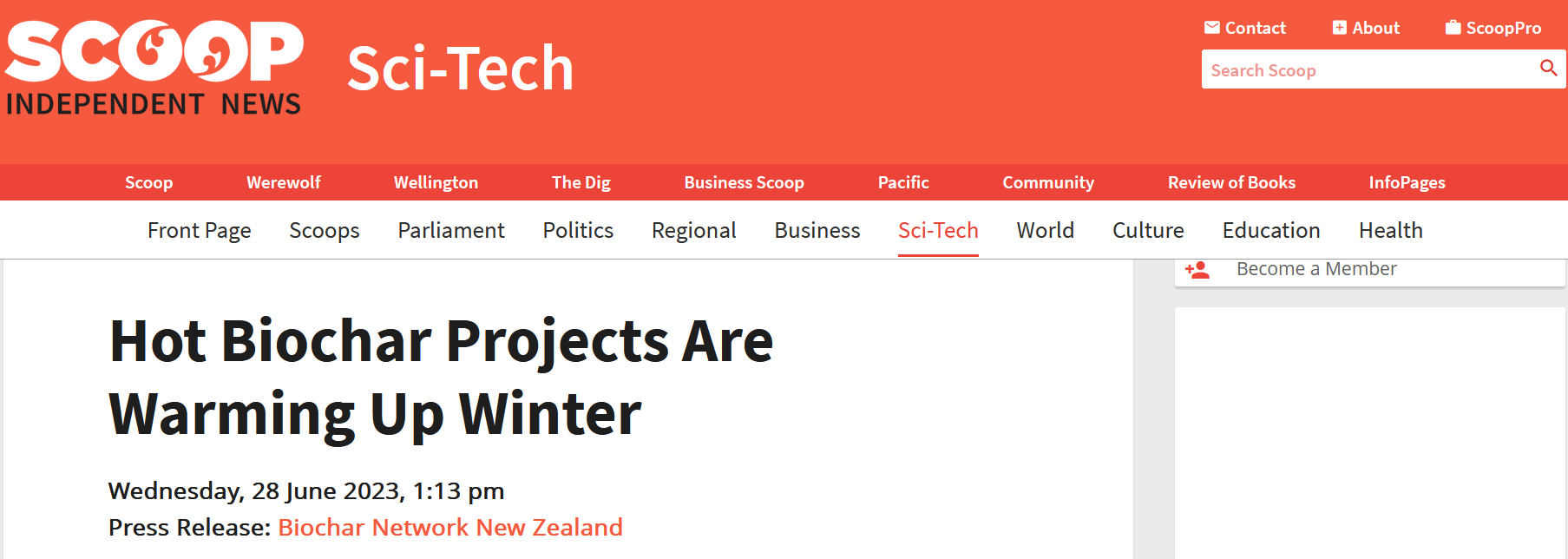The Biochar Network New Zealand’s campaign to increase the profile of biochar continues. A Carbon Rescue initiative stemming from the post-Gabrielle residue cleanup has helped facilitate the conversation on how to create value from biomass through the creation of biochar. Although public funding for the initiative is pending, a number of Network members all over the motu are demonstrating better ways of using excess biomass.
“With large volumes of biomass residues readily available to be converted to biochar, New Zealand is in a good position to develop innovative ways to get best value from biochar”, says Warrick Isaachsen, Chair of Biochar Network New Zealand Inc.
In Canterbury, the Biochar Network facilitated a workshop in collaboration with Pukaki Forestry Ltd to present the basics of biochar production and its applications. The project aims to demonstrate alternative methods to manage residues from wilding pine control and eradication. Further north in the Hutt Valley, Biochar Network member, The Good Carbon Farm was last month awarded a grant from Upper Hutt City Council to convert forestry slash into biochar for use in local community gardens.
In the aftermath of Cyclone Gabrielle and in areas affected by wildfires, the opportunity for biochar to be made from problematic organic resource streams has become increasingly obvious. The recent Ministerial inquiry into forestry slash and woody debris made multiple mentions of the potential of this harmful waste stream to be converted to biochar and used to remediate damaged land.
“Internationally, biochar-related carbon credits are traded on the multi-billion dollar voluntary carbon market. We welcome a review of the Emissions Trading Scheme to open the door for alternative, long-term carbon sequestering methods, such as biochar. By valuing the carbon sequestration of biochar, New Zealand can help provide the right market signals for forestry managers and owners to convert forestry residues into more valuable resources, even on challenging sites,” says Isaachsen.
In Marlborough last week, biochar was on the agenda at the Organic and Biodynamic Winegrowing Conference, and Network members and biochar specialists Soilpro and NZ Biochar Ltd were in attendance to engage with viticulturalists. The uptake of biochar from organic winegrowers in the region is on the rise, building on field trials established in collaboration with Marlborough Grape Growers Cooperative and Nelson Marlborough Institute of Technology.
In Northland, the Whangārei Night Lights Festival next month will feature Crucibulum, a live biochar kiln created by artists Sally Howe and Robert Mignault as a large-scale, contemplative and immersive fire-sculpture. In the Waikato, a number of biochar project initiatives are in development, building on informal animal feed trials that have taken place over the past two years. And across the ditch, the Australia New Zealand Biochar Industry Group has launched a roadmap to guide the growth of local biochar production into a major industry by 2030.
As well as enjoying international recognition as one of few negative emissions technologies readily available to reverse climate change, biochar increases yield from plants, improves soil and water quality, and reduces fertiliser and irrigation dependency.
For more information about biochar, visit www.biochar.net.nz.

https://nzlogger.co.nz/forest-talk/creating-value-from-biomass-through-biochar
Press release picked up by NZ forestry sector
I missed the Friday Offcuts 13July coverage of the Press Release:
https://www.fridayoffcuts.com/index.cfm?id=1023
Picked up by Residues to Revenues:
https://woodresidues.events/adding-value-to-biomass-through-biochar/